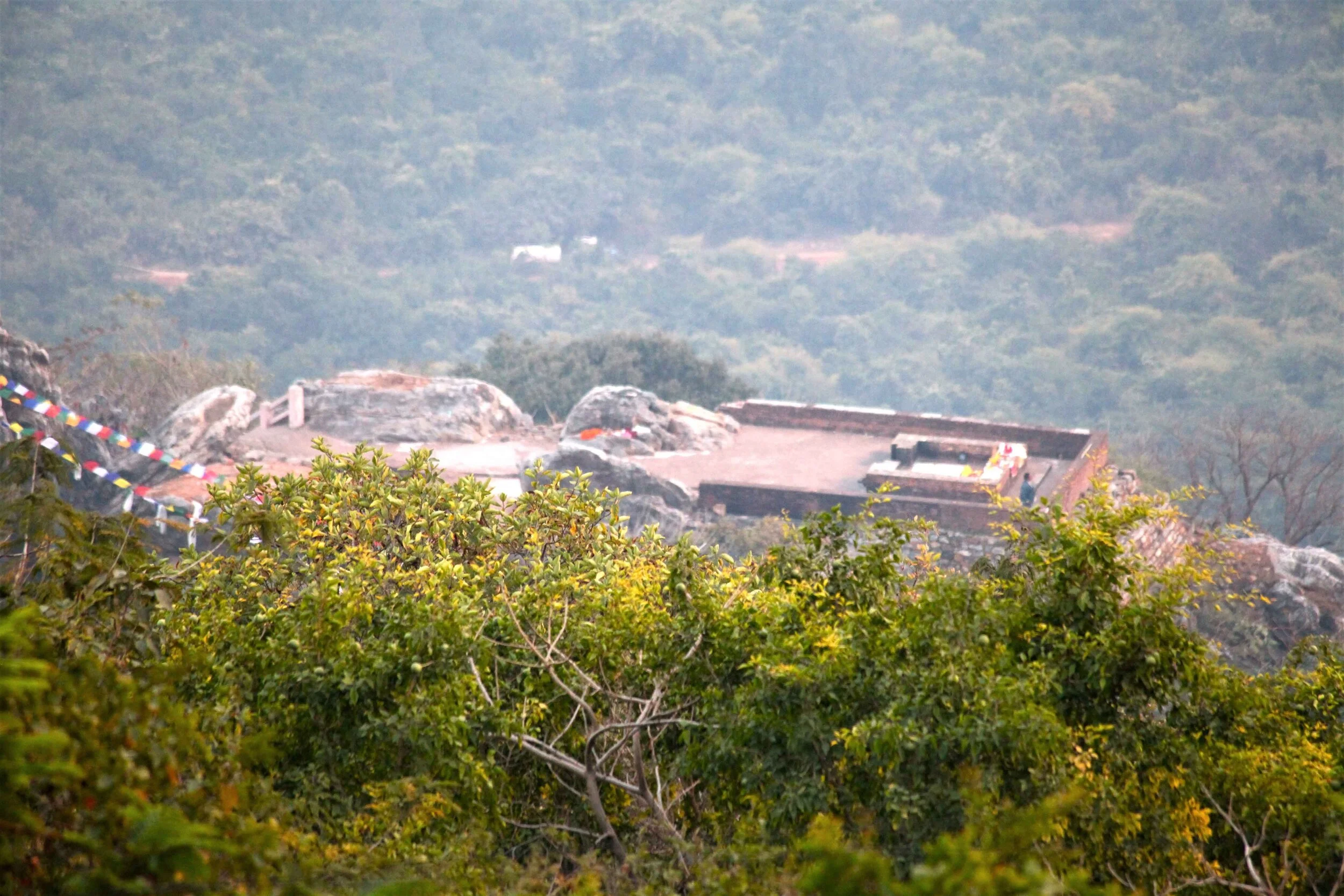
Rajagaha (Rajgir)
Rajagaha (in Pali) is an ancient city in the Indian state of Bihar. The following notable sites are located in this area:
Dhungasiri Cave
Vulture’s peak
First council (cave)
Bimbisara jail
Bamboo grove
Read more about it: http://www.buddhanet.net/e-learning/pilgrim/pg_23.htm

Dhungasiri Cave also known as Mahakala Cave
View of the hill where the cave sits (on the right) towards/under the trees and prayer scarves.
Inside the small and narrow cave
Dhungasiri Cave also known as Mahakala Cave or Dungeshwari cave, is situated 12 km north-east of Bodhgaya, Bihar. It is also referred to as being near Pragbodhi, on the right bank of the river Neranjara. It is where the Bodhisatta practised Severe Austerities for 6 years prior to enlightenment.
For six years the Bodhisatta stayed in Uruvela, practicing various self-affl ictions in hopes of purifying his mind from all desire for pleasure. His austerities included such practices as fasting, taking fi re baths, sitting and sleeping on thorns, and holding his breath. Although he performed these austerities with great patience and endurance, not allowing his mind to be overcome by the resulting pain, he succeeded only in damaging his body to a point of near death without gaining the supreme awakening he sought.
Vulture’s Peak
The Vulture Peak (Pali: Gijjhakūṭa, Sanskrit: Gṛdhrakūṭa), also known as the Holy Eagle Peak or Gádhrakúta, was the Buddha's favorite retreat in Rajagaha (now Rajgir) and the scene for many of his discourses. Rajgir is located in Bihar, India. It is so named because it resembles a sitting vulture with its wings folded.














ADITTAPARIYA̅YA SUTTA Later, the Buddha separated from the fi ve new monks to go to the region of Rajgir, teaching the Adittapariyāya Sutta, the Fire Sermon, to the three brother hermits—Uruvela Kassapa, Nadī Kassapa, and Gayā Kassapa—along with their 1,000 followers, all of whom became arahants in the course of the sermon.
https://www.accesstoinsight.org/tipitaka/sn/sn35/sn35.028.than.html
Other notable sites in Rajagaha










